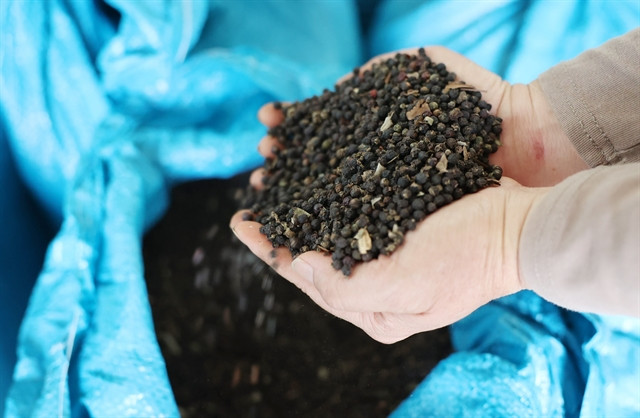Việt Nam pepper exports to top $1 billion this year
Việt Nam could ship more than US$1 billion worth of pepper abroad for the whole 2024 on the back of high global demand and limited supply, according to the Việt Nam Pepper and Spice Association (VPSA).
Việt Nam could ship more than US$1 billion worth of pepper abroad for the whole 2024 on the back of high global demand and limited supply, according to the Việt Nam Pepper and Spice Association (VPSA).
The pepper industry, the association said, is on track to return to the "billion-dollar" club, with export revenues hitting $764.2 million as of July 30.
During the seven-month span, more than 164,300 tonnes of pepper was sold to foreign markets at an average export price of $4,568 per tonne for black pepper and $6,195 per tonne for white pepper, up 32.7 per cent and 25 per cent, respectively, year-on-year.
The US was the largest purchaser, followed by Germany, the United Arab Emirates (UAE) and India.
Brazil, the world’s second biggest black pepper producer and exporter, has suffered crop failure, driving global prices skyward for the remaining months of 2024. Production in Việt Nam, Malaysia and Indonesia is also forecast to fall sharply due to the impacts of El Nino.
In the next three to five years, pepper supply will lag behind demand.
Domestic pepper prices in July fetched VNĐ150,000 (over $6) per kilogramme, rising 82.9 per cent against January, and 120.6 per cent year-on-year.
The VPSA forecast a fluctuation in the pepper prices in the coming time due to formidable challenges in the market.
According to a survey conducted by the VPSA in three Central Highlands localities in July, along with extreme weather caused by climate change, farmers chose durian and coffee production over pepper as the first two fetching higher prices.
Việt Nam’s key pepper planting areas of Gia Lai, Đắk Lắk and Đắk Nông in the Central Highlands, and Bình Phước, Đồng Nai and Bà Rịa-Vũng Tàu in the southeastern region slashed cultivation acreage by 50 per cent as compared to peak cultivation times.






